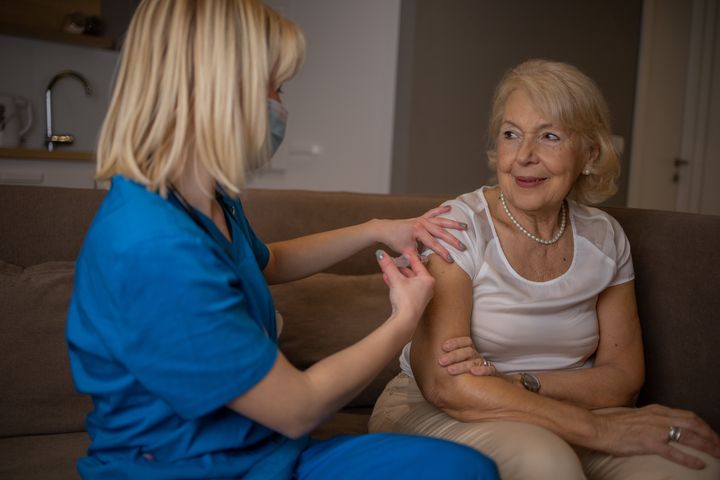
Most people have a favourite arm to offer up for all vaccinations, testing or anything vaguely medical – and, if you’re feeling sensible, it’s probably the one you use less.
If that’s you, researchers now believe you should stick with it.
It’s a tip particularly important right now as the government has just brought forward the new autumn Covid booster programme for those over-65, amid concerns about a rise in infections.
The new study, published in August in the journal eBioMedicine, doesn’t say the left or the right is more effective – but it does suggest whichever arm you’ve chosen as the recipient should probably remain your preferred choice.
Using the data from 303 people who received the mRNA vaccine as well as a booster shot in Germany, the scientists looked at how their bodies responded two weeks later.
It turns out the number of “killer T cells” was higher in those who received their shots in the same arm.
These cells are essential to help the body fight back against infection.
For those who had the jabs in the same arm, the T cells were present in 67% of cases.
Only 43% of those who got it in different arms had killer T cells, according to study coauthor Laura Ziegler, doctoral student in Saarland University.
Study co-author Martina Sester – a biologist and head of the department of the Institute of Infection Medicine at Saarland University Hospital in Germany – said discussions about getting the vaccine in a particular arm was a question which seemed “so banal, so trivial that nobody before has thought to ask it”.
This is a topic which has rarely been researched before – so the study’s findings are not 100% concrete. And, it’s not yet known if the results trigger improved or longer lasting protection against the virus.
Dr William Schaffner, a professor from the Division of Infectious Diseases at Vanderbilt University Medical Centre in Nashville, who was not involved in the study, said its findings makes sense.
The location of jab may impact the immune response because the cells which trigger such a reaction are found in local lymph nodes.
According to NHS Inform, lymph nodes are “pea-seized lumps of tissue that contain white blood cells”. They help fight bacteria and viruses.
If the ones in the same part of the body are re-stimulated, there is more of an immunological reaction.

However, Schaffner told CNN: “We wouldn’t know that unless we did a much larger clinical study with follow-up actual infections.”
While T cells react to the initial invasion, antibodies are responsible for the ongoing response to a virus or infection.
There was no clear pattern showing it mattered which arm received the jab for antibody rates in the study.
However, the antibodies did seem to be better at binding to the spike proteins of the Covid virus if the initial vaccine and booster shots were delivered in the same arm.
This is an essential part of the immune response because the spike protein is how the virus gets into cells.
Still, formal recommendations have not yet been made as this area of research needs to collect more data and see if there’s a similar outcome for other vaccines.